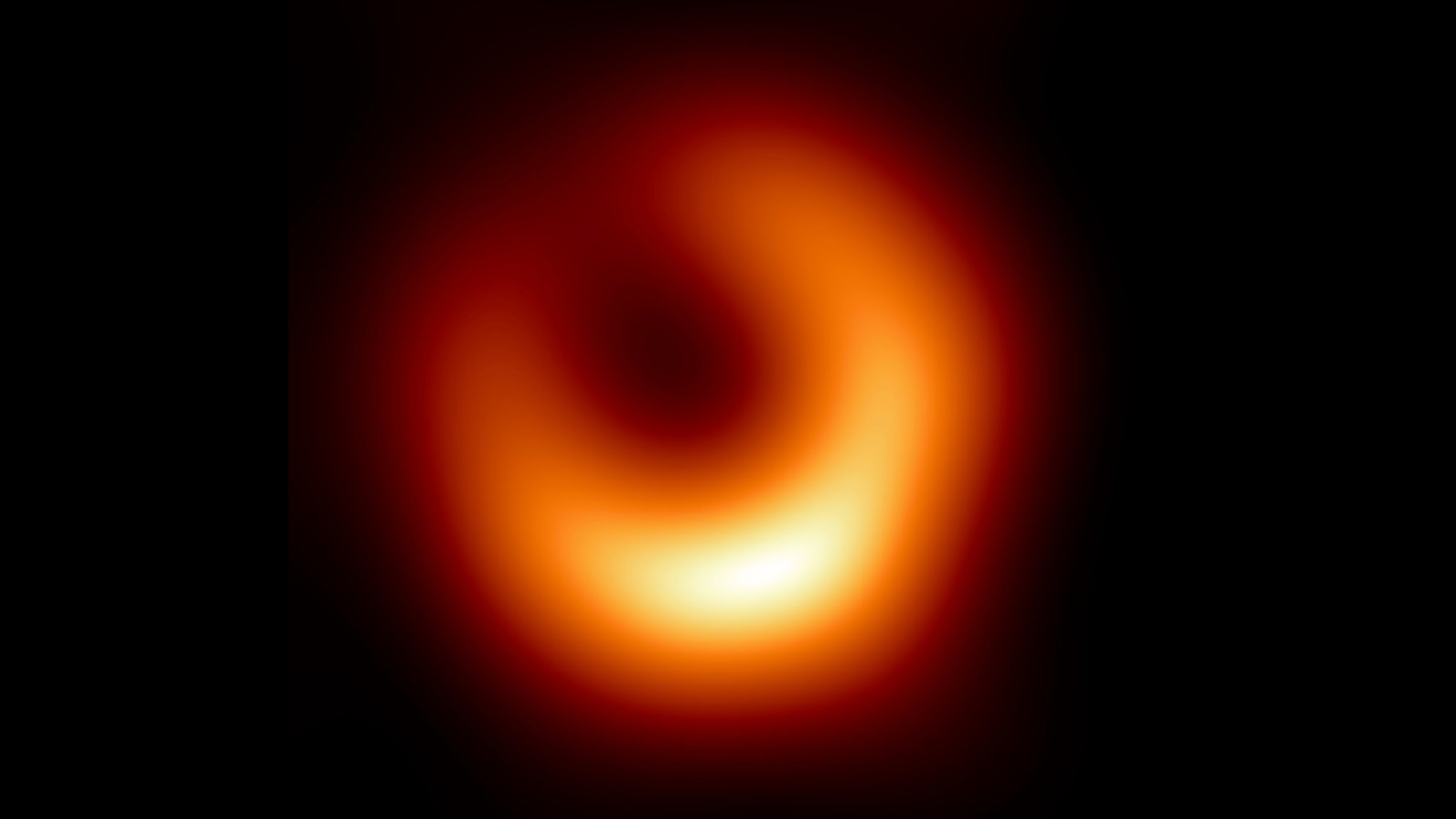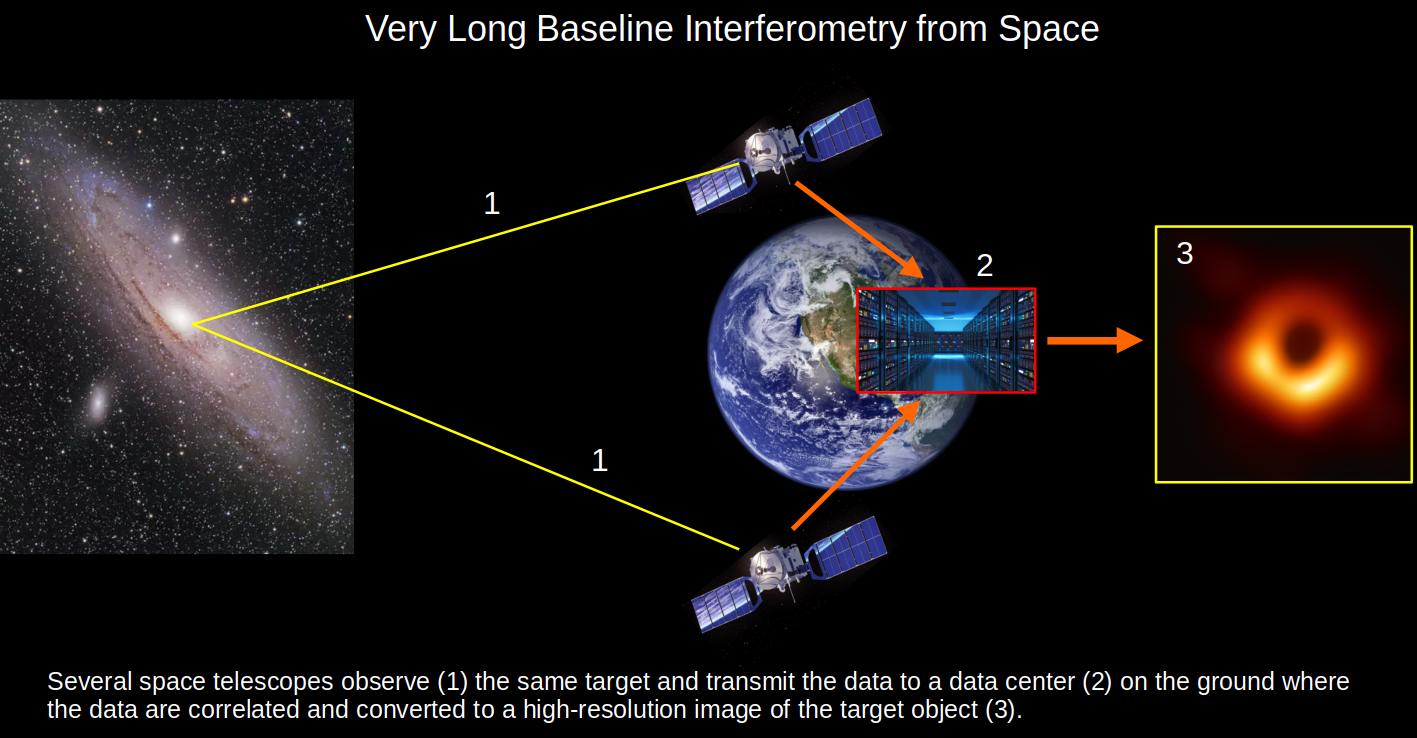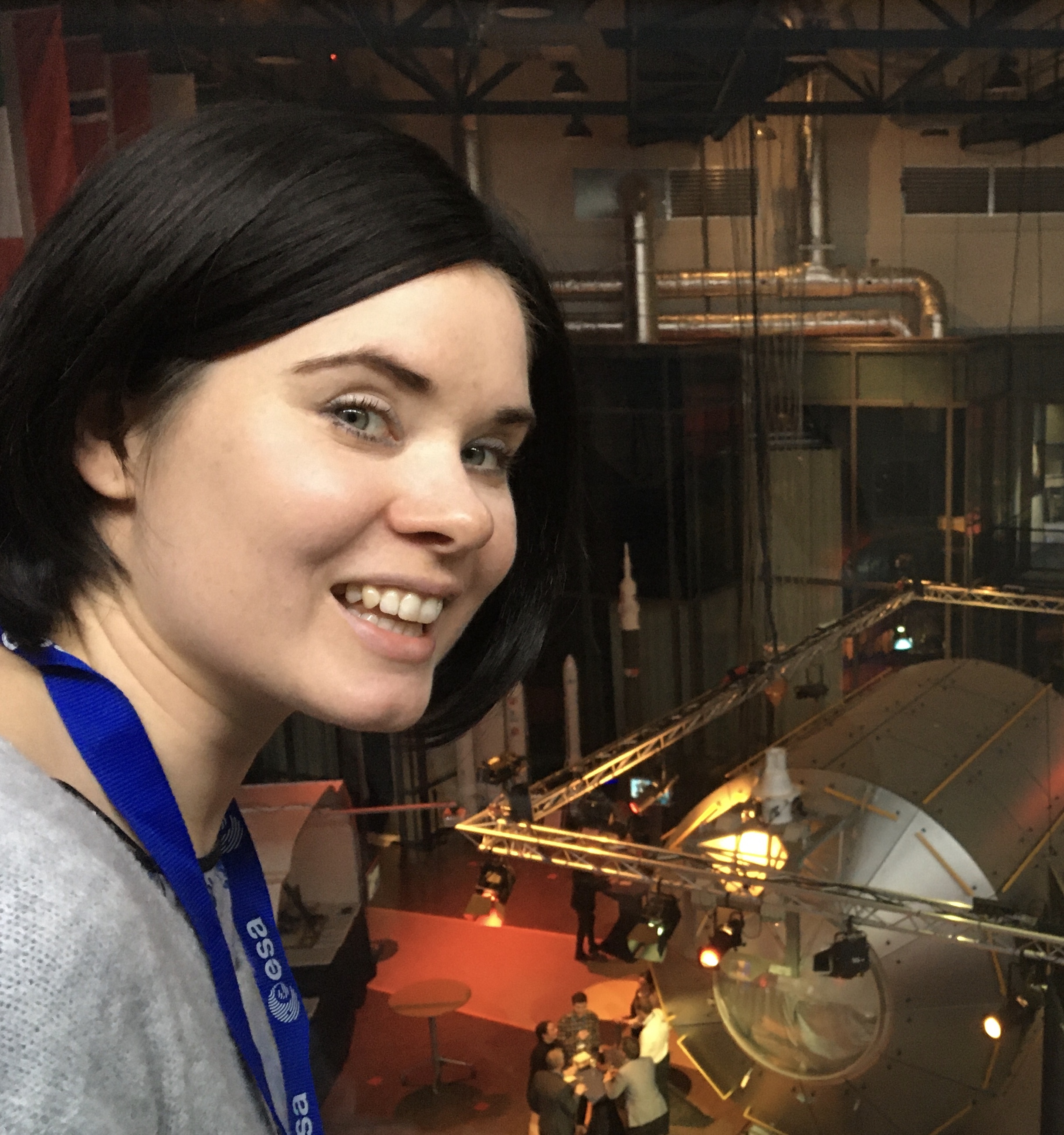Small satellite constellation could reveal black holes like never before
"Currently, features under a certain size simply cannot be imaged."

Researchers in South Korea are developing a constellation of satellites that could reveal what goes on in the vicinity of supermassive black holes like never before.
The constellation, dubbed Capella, is a brainchild of Seoul National University astronomy professor Sascha Trippe. An expert in black holes, Trippe has grown frustrated with the limitations of humanity's existing instruments for observing black holes and concerned that unless major technological advances are made, research may soon reach a "dead end."
When the first-ever image of a supermassive black hole — the one at the center of the Messier 87 galaxy some 55 million light-years away from Earth — was revealed to the world in 2019, it caused a sensation. It showed a glowing ring the shape of a donut, enclosing an eerie dark spot. It confirmed that black holes, these mind-boggling hotspots of gravity so potent that not even light can escape from them, indeed exist. In 2022, an image of the black hole at the center of our own galaxy, the Milky Way, followed. As captivating as the images were, for researchers like Trippe, they were nowhere near perfect.
These imperfections are a result of the limitations of the Event Horizon Telescope (EHT), a planet-wide network of radio telescopes that acts like a single planet-wide observatory thanks to a technique known as very long baseline interferometry.
"The problem is that at any given point in time, each pair of antennas [of EHT] only measures one point of the target image," Trippe told Space.com. "You end up with an image that is mostly empty and requires a lot of processing. For that reason, we miss a lot of structure, because features under a certain size simply cannot be imaged."
For example, astronomers know that a powerful jet of hot gas blasts from the Messier 87 black hole at the speed of light. This jet, however, cannot be seen in the famous 2019 image.
One way to improve the resolution of black hole images is to measure emissions of radio signals that have higher frequencies and thus shorter wavelengths. But that is impossible from the surface of our planet because water vapor present in Earth's atmosphere mostly absorbs this signal.
Get the Space.com Newsletter
Breaking space news, the latest updates on rocket launches, skywatching events and more!
Radio telescopes on satellites would have an unobstructed view of this kind of radiation. They would also solve two additional problems. The Capella satellite constellation envisioned by Trippe and his colleagues would consist of four satellites orbiting at altitudes between 280 and 370 miles (450 and 600 kilometers).
No longer restricted by the perimeter of the planet, the orbiting radio-telescope network — through the interferometry technique — would have a larger diameter than the planet-wide EHT, therefore providing better image quality and better resolution. As the satellites move around the planet, circling it multiple times per day, their measurements leave no empty spots, unlike the sparse network of Earth-based EHT telescopes.

Trippe says the system would open a completely new window into the processes taking place in the vicinity of the black holes' event horizons, the boundaries from beyond which nothing escapes.
"We would really like to understand how the relativistic jets are formed from the gas accreted by the black hole," Trippe said. "But it requires observations in resolutions that are currently impossible and could only be handled by a space-based radio interferometer like the Capella constellation."
The orbiting black-hole watching system could image black holes in nearby galaxies at a much faster rate than the Earth-bound EHT and provide more accurate estimates of their masses. It would also help researchers understand the processes that take place inside the glowing rings that surround those black holes, according to Trippe.
Scientists have so far not attempted to place many radio telescopes into orbit. Due to the long wavelengths of the radio signals, the receiving antennas must be quite large and are therefore not easily launched into space or deployed. But with advances in technology, Trippe thinks a modest radio observatory could now fit into a 1100-pound (500-kilogram) satellite bus.
"Technology is just becoming available now so that we can actually build these systems sufficiently small and sufficiently cheap," said Trippe.
He envisions the whole system to cost no more than $500 million. South Korea's recently formed Korea Aerospace Administration has expressed interest in the project, Trippe said, and will decide next year about providing funding. If all goes well, scientists might be able to shed more light on the insatiable monsters at galactic centers as soon as early 2030s.
Trippe and his team presented the concept in paper published on arXiv.
Join our Space Forums to keep talking space on the latest missions, night sky and more! And if you have a news tip, correction or comment, let us know at: community@space.com.

Tereza is a London-based science and technology journalist, aspiring fiction writer and amateur gymnast. Originally from Prague, the Czech Republic, she spent the first seven years of her career working as a reporter, script-writer and presenter for various TV programmes of the Czech Public Service Television. She later took a career break to pursue further education and added a Master's in Science from the International Space University, France, to her Bachelor's in Journalism and Master's in Cultural Anthropology from Prague's Charles University. She worked as a reporter at the Engineering and Technology magazine, freelanced for a range of publications including Live Science, Space.com, Professional Engineering, Via Satellite and Space News and served as a maternity cover science editor at the European Space Agency.
-
Unclear Engineer A few thoughts:Reply
1. The increase in base line from putting the antennas on satellites orbiting only a few hundred miles above Earth's surface does not seem to be much of a game-changer, because the change in base line is only something like 8,000 miles + 2 x altitude.
2. The ability to use higher wave lengths seems to be the real game-changer.
3. Putting large diameter radio dish antennas into orbit seems like the technological problem that needs research development;
a. I wonder it the technique of using a crumpled, preformed NiTiNOL wire antenna, which deploys from its balled up shape by heating the special NiTiNOL wire, would provide enough precision to be useful for radio astronomy.
b. If not, then it seems that fabrication in space from precision built components would be the answer. Once fabricated, the properly shaped radio telescopes could be boosted to the orbits from which they perform their observations.
c. They could be deployed to distances much greater than a few hundred miles. Geostationary orbit would give a baseline increase of (8,000 + 2 x 22,000) / 8,000 = 5.5 times the largest baseline from Earth's surface. -
Classical Motion I understand the man’s point. It’s not the increased distance of the base line. It’s getting a phase axis(interferometer)… out of the atmosphere filter.Reply
It’s a clarity endeavor. Removing the fog. Defrosting.
But I still don’t see a black hole. Maybe he will show me one.
It’s a double dare. -
Classical Motion People who study passive IR cooling run into this same problem. Or IR communications.Reply -
Classical Motion https://en.wikipedia.org/wiki/Atmospheric_window#/media/File:Atmospheric_Transmission.svgReply -
skynr13 Reply
The atmosphere in this case is not a filter, but an obstruction.Classical Motion said:I understand the man’s point. It’s not the increased distance of the base line. It’s getting a phase axis(interferometer)… out of the atmosphere filter.
It’s a clarity endeavor. Removing the fog. Defrosting.
But I still don’t see a black hole. Maybe he will show me one.
It’s a double dare. -
Classical Motion A selective obstruction is called a filter. There are many filter sub types, describing the selectivity of the filter. For EM spectrums.Reply
There are also many filters for particles and matter. Filter by size, weight or charge…. or other properties.
The periodic table is a good example……..of filtering. Many properties……a multi filter. A matrix filter. -
skynr13 I still tend to differ. Totally removing the 'filter' (aka; atmosphere) would be more or less like removing an obstruction from an Earth based telescope, except it would be difficult if not impossible for the astronomer to breathe! All those other filters you mention are really beside the point.Reply -
Jim Franklin Reply
Interesting, I only hope that they can avoid the controversy surrounding the M87 "picture" and that of the one in the heart of the Milky Way.Admin said:A constellation of small satellites could help researchers view processes in close vicinity of supermassive black holes like never before.
Small satellite constellation could reveal black holes like never before : Read more
